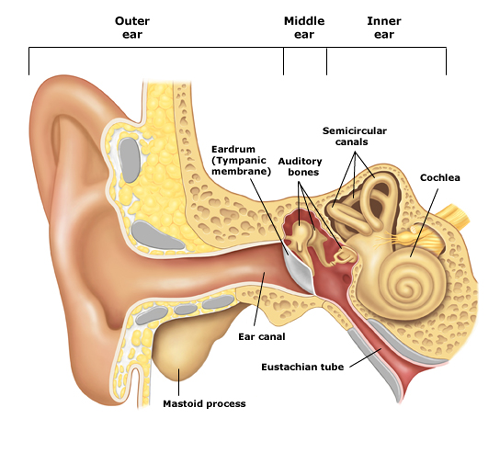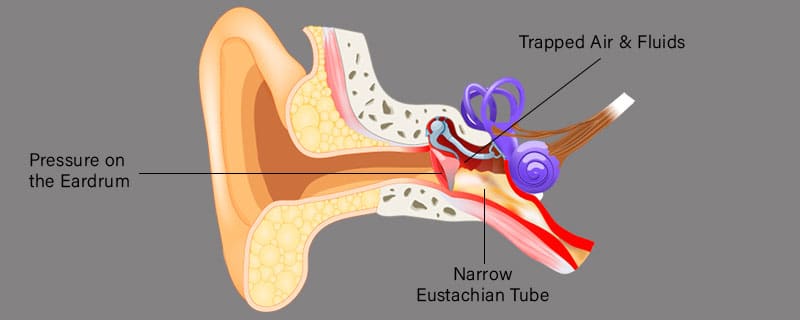Ear barotrauma is a condition that occurs when there is a difference in pressure between the inside and outside of the eardrum, resulting in discomfort or pain. Understanding how to prevent and manage ear barotrauma is essential for individuals who engage in at-risk activities regularly. This article will explore the fundamentals of ear barotrauma, including its causes, symptoms, and effective prevention and treatment methods.
What is Ear Barotrauma?
Ear barotrauma, also known as ear pressure injury, occurs when there is a blockage of the Eustachian tube, leading to an imbalance in pressure between the middle ear and the air outside the body. This condition can cause discomfort, pain, and in some cases, hearing loss. It is important for individuals to be aware of the factors that can contribute to this condition and the methods to prevent it during activities that involve changes in air pressure. Understanding the symptoms and early signs of ear barotrauma is crucial for prompt intervention and treatment.
(Source: Tampa Bay Hearing, Ear Solutions and Education.)
The Outer Ear
When it comes to diving, the importance of the medical questionnaire cannot be overstated. The outer ear is particularly vulnerable to pressure changes experienced during descents and ascents in diving. It is crucial to thoroughly assess any pre-existing conditions that may affect the ears, such as ear infections or perforated eardrums, before engaging in diving activities. Furthermore, seeking medical clearance from a healthcare professional is imperative to ensure the safety of the individual and to prevent any potential ear-related complications.
The Middle Ear
The middle ear is an air-filled space located behind the eardrum. It contains three small bones that vibrate in response to sound waves, transmitting sound signals to the inner ear. The Eustachian tube, which connects the middle ear to the back of the nose and upper throat, plays a crucial role in equalising the air pressure on both sides of the eardrum. Proper functioning of the Eustachian tube is essential to prevent the build-up of pressure imbalances that can lead to ear barotrauma.
ALSO READ : The Importance of The Medical Questionnaire When Diving
The Inner Ear
The inner ear is also at risk during diving due to the significant pressure changes. It is essential to consider any history of vestibular disorders or inner ear diseases that could be exacerbated by diving. Additionally, individuals with a history of motion sickness or vertigo may be more susceptible to experiencing dizziness or disorientation underwater. Therefore, a comprehensive medical questionnaire should address these concerns to identify any potential risks and ensure the diver’s safety.
Causes of Ear Barotrauma
The most common causes of ear barotrauma include rapid changes in altitude, such as during aeroplane takeoff and landing, scuba diving, or driving up steep mountains. These activities can lead to differences in air pressure, which can affect the Eustachian tube’s ability to equalise the pressure in the middle ear. Additionally, pre-existing conditions such as allergies, sinus infections, or colds can contribute to Eustachian tube dysfunction, making individuals more susceptible to ear barotrauma.
Understanding the specific activities and conditions that can exacerbate ear barotrauma is vital for individuals who engage in these activities. Proper knowledge and preparation can significantly reduce the risk of developing ear barotrauma and its associated symptoms.
To effectively prevent and manage ear barotrauma, individuals should be aware of the symptoms and early signs, as well as the best practices for equalising ear pressure during activities that involve changes in air pressure. Early intervention and proper techniques for equalising ear pressure can mitigate the risk of developing ear barotrauma and its related complications.
Types of Ear Barotrauma
There are three main types of ear barotrauma that are commonly encountered:
- External Ear Barotrauma: This type of barotrauma primarily affects the outer ear and is often caused by exposure to rapid changes in air or water pressure.
- Middle Ear Barotrauma: Middle ear barotrauma occurs when the air pressure in the middle ear is not equalised with the surrounding environment, leading to discomfort, pain, and potential damage to the eardrum.
- Inner Ear Barotrauma: Inner ear barotrauma affects the innermost part of the ear and can cause symptoms such as dizziness, vertigo, and hearing loss due to changes in pressure impacting the delicate structures of the inner ear.
Each type of ear barotrauma requires specific interventions and management to alleviate symptoms and prevent potential long-term complications. Understanding the differences between these types of barotrauma is crucial for appropriate diagnosis and treatment.

(Source: Lanarkshire Hearing Centre. Airplane Ear [Ear Barotrauma])
Avoiding Ear Barotrauma
To avoid ear barotrauma, it is important to take precautions during activities that involve changes in air or water pressure. For instance, when flying in an aeroplane or diving underwater, equalising the pressure in the ears by swallowing, yawning, or using specialised earplugs (Not recommended for diving) can help prevent barotrauma. It’s also essential to seek medical advice if you have a cold, sinus infection, or allergies before engaging in activities that may involve pressure changes, as these conditions can affect the body’s ability to equalise ear pressure.
Additionally, for individuals prone to ear barotrauma, such as frequent flyers or scuba divers, consulting with an ear, nose, and throat specialist can provide personalised strategies to minimise the risk of barotrauma during specific activities. Taking these preventive measures can significantly reduce the likelihood of experiencing ear barotrauma and its associated discomfort and complications.

